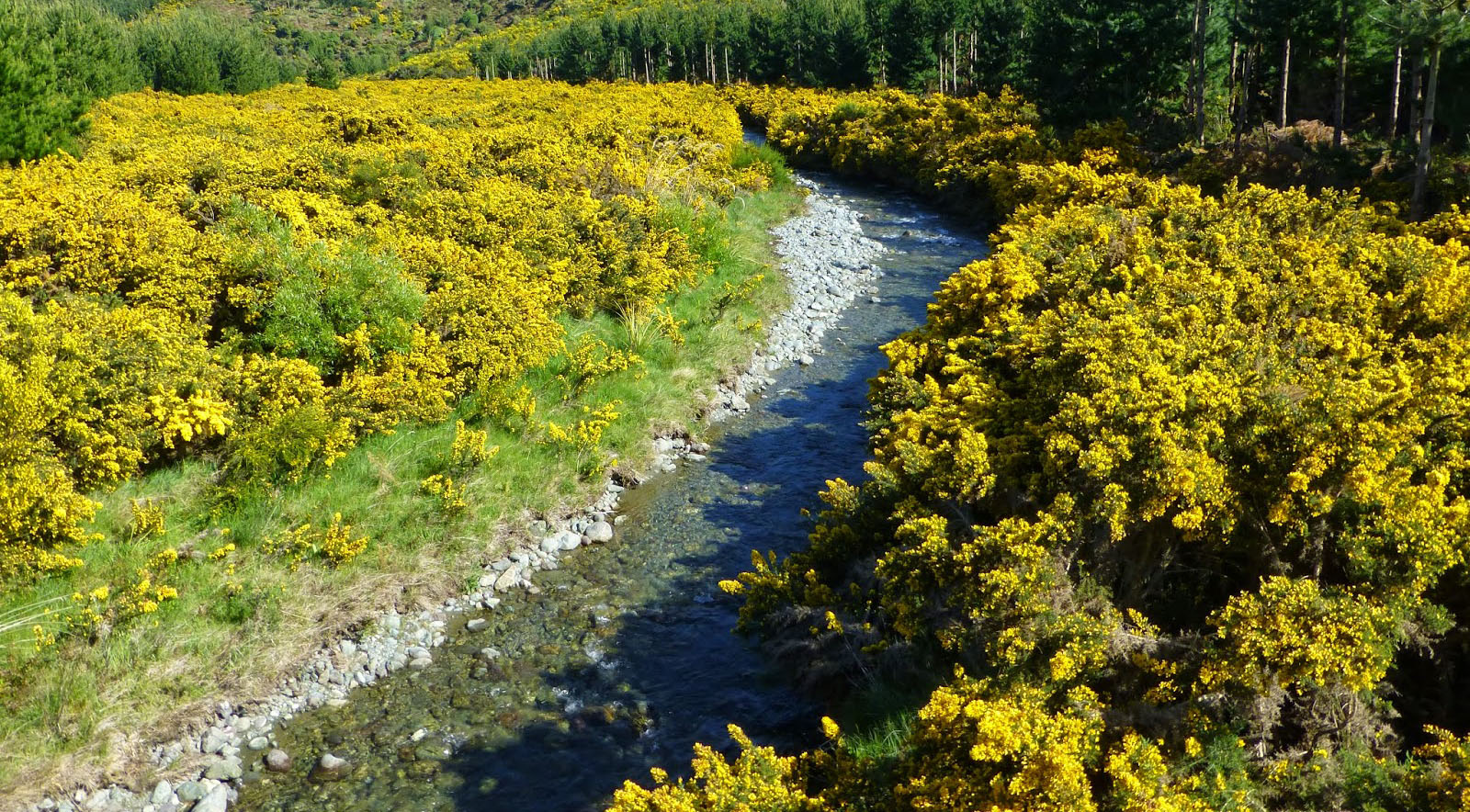Gorse

What does it look like?
Gorse (Ulex europaeus), is probably the most widely recognise weed in New Zealand. It covers an estimated 5% of New Zealand’s agricultural and developed areas. A perennial densely branched thorny shrub native to western Europe, it was introduced to New Zealand in the early nineteenth century to grow hedges as a form of fencing.
Gorse typically grows to 2m tall, with main stems erect or spreading, densely branched and spiny in younger parts but eventually bare at the base. Terminal and lateral spines are rigid and deeply furrowed, 15~30mm long; secondary spines subtending lateral up to 12mm long. The yellow flowers solitary 1.5~3mm wide can be seen for around 9 months of the year, even in winter. Gorse reproduces vegetatively (sprouting off the main plant) and through seeds that germinate in spring, autumn, or spring to mid-summer.
While gorse may be considered a useful nursery for some native bush regeneration, preventing it from spreading is difficult, and it is entirely unsuitable for braided river environments that are by nature highly dynamic and not suited for native bush. Moreover, seed from gorse is washed downstream in freshes and floods, causing problems downstream.
How is it spread?
- Seeds are dispersed by an explosive mechanism up to 6m from the parent plant, which means gorse located anywhere near braided rivers is a potential source of infestation
- Machinery assists seed dispersal, during cultivation, roadside mowing, etc
- Some seed is carried by water and shingle
- Dispersed by some birds

Why is it a problem?
- Prolific seeder that spreads rapidly, matures quickly, and colonises large areas, forming pure stands that dominate habitats, causing native plants to be excluded, disturbing the ecology of an area and encouraging further weed invasion.
- Holds the gravel together, changing the hydrology of the stream so that fast-flowing channels, unsuitable for wading birds to feed in are formed.
- Takes over the open spaces birds need for nesting
- Hides introduced predators like cats and stoats
- Seeds can remain viable for up to 100 years (although most don’t last past 30 years)
- Tolerant to frost and drought and slightly tolerant of poor drainage, so it can readily take hold in areas of braided riverbeds already infested by other species such as Russell lupin and broom
Conservation activities
Environment Canterburylist gorse as a ‘declared pest’. Being a declared pest means there are specific rules that need to be met within the Canterbury region. Click here to find out more.
Bioeconomy Science Institute: Biological control agents that have been released to attack broom include
- Gorse seed weevel (Exapion ulicis)
- Gorse pod moth (Cydia succedana)
- Gorse thrips (Seriocothrips staphylinus)
- Gorse soft shoot moth (Agonopterix ulicetalla)
- Colonial hard shoot moth (Pempella genistella)
- Gorse spider mite (Tetranychus lintearius)
Where is it found?
Everywhere. See iNaturalist and select ‘map’ or use the mapping tools below for Canterbury.


